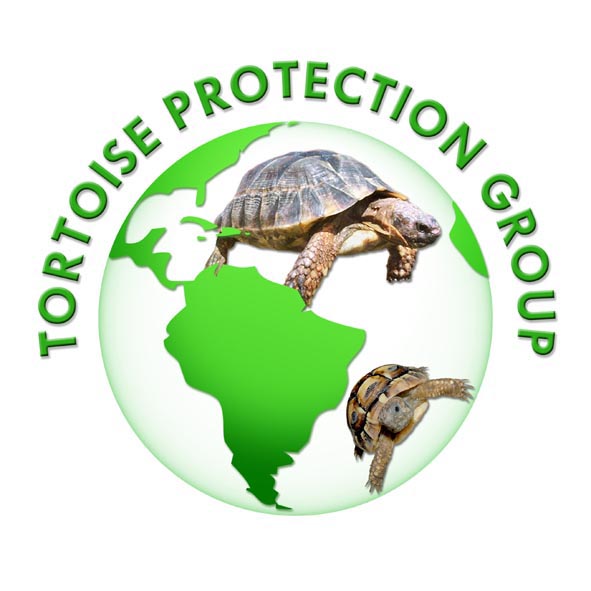Healthy Parents Creates Healthy Babies
To give the captive bred hatchling tortoise the best possible start in life it is essential that the parents chosen to breed from are as healthy as possible.
It is really important that both the male and the female tortoise are in optimum health (create hot spot) and that the breeder does not breed from a tortoise which is showing signs of disease, stress, or has been recently unwell.
If the male tortoise is to produce motile, healthy spermatozoa which are capable of fertilising mature ova he should be given as much consideration as the female tortoise, a factor which may often be overlooked by the novice breeder.
Good Husbandry practices
Warmth
As tortoises are ectothermic there is a need to ensure that they have free access to a warm environment. Warmth is essential to allow the digestive system to function and easily digest food. A responsive immune system is also dependent on the tortoise being warm.
Diet
A healthy tortoise will be one that is well nourished and is provided with a well balanced diet appropriate for that species and be given food which has a good calcium phosphorus ratio. Where a tortoise is malnourished prior to laying fertile eggs during incubation there may be an increased risk of late embryonic death.
UVB
In addition the tortoise will require natural sunlight or artificial lighting providing UVB and be given plenty of space to exercise.
Mineral and Vitamin supplements
The diet of both tortoises will require supplementing with mineral and vitamins and in particular, the female tortoise will require additional supplementation to the diet throughout the pre-mating period and during the egg laying stage. This is essential as she will use up large reserves of calcium for the making of the calciferous shells of the maturing eggs and she will also need to provide the yolk sac with essential nutrients for the developing embryo. Daily calcium carbonate, in the form of limestone flour, sprinkled freely on the food, cuttlefish bone available to chew on, and a good vitamin supplement such as nutrobal or vionate at least 3 times a week should be provided
Stress Free Environment
If the male is too amorous he can actually traumatise the female and cause her injury. She also needs peace from the male to successfully lay her eggs. In a stressed condition she may actually retain her eggs which can lead to serious complications. In a captive environment, despite the best attempts of the keeper to provide plenty of hiding places, it isn’t always possible for the female to avoid the male advances. For this reason many breeders do not keep adult males in with the females and only bring them together for mating purposes.
Selection of Breeding Pair
It is important to choose healthy mature females and males of the same species and sub species of tortoise for breeding purposes. Use tortoises from different breeding stock, as where inbreeding takes place from related tortoises, there may possibly be an increased risk of genetically malformed hatchlings.
Where cross mating does occur between different species/sub species often the eggs are infertile or any off spring produced are themselves infertile. It is a practice not to be encouraged for the conservation of species.
Age and of the Breeding Pair
Sexual maturity in tortoises is size dependant rather than age dependant. In captivity where tortoises have continual access to good food they often grow much quicker than their wild tortoise counterparts. In the wild a tortoise may not be sexually mature or capable of producing fertile eggs until 15 to 20 years of age. In captivity sexual maturity can be achieved from approximately 4 or 5 years of age in some tortoises. The Tortoise Protection Group are of the opinion that breeding with such a young tortoise in captivity may have a detrimental effect to the long term health of the tortoise and breeding should be delayed until the tortoise is a few years older.
Males often have preference for larger females and to ensure that one female does not receive all the male attention similarly sized females should be in the breeding group.
As the tortoise ages, not only is there the potential for stress, but it is also possible that there may be a higher incidence of genetic defects in the off spring, the fertility rate may be reduced and there is a higher risk in obstetric complications during egg laying. For these reasons breeding shouldn’t be encouraged in older tortoises.
Mating Behaviour
The type of pre-mating behaviour exhibited by the male tortoise varies from species to species but invariably in most species the male tortoise mounts the female from behind and above. The male is normally the smaller tortoise.
The male pre-mating rituals, depending on species, can include aggression, vocalisations, shell butting, and biting the head and limbs of the female. This type of behaviour is normal and in a receptive female will lead to submission for mating and to ovulation of mature eggs which are capable of being fertilised.
Sperm storage
It should be noted that the female tortoise is capable of storing sperm for several years.
All Rights Reserved
Copyright © 2009 Tortoise Protection Group





